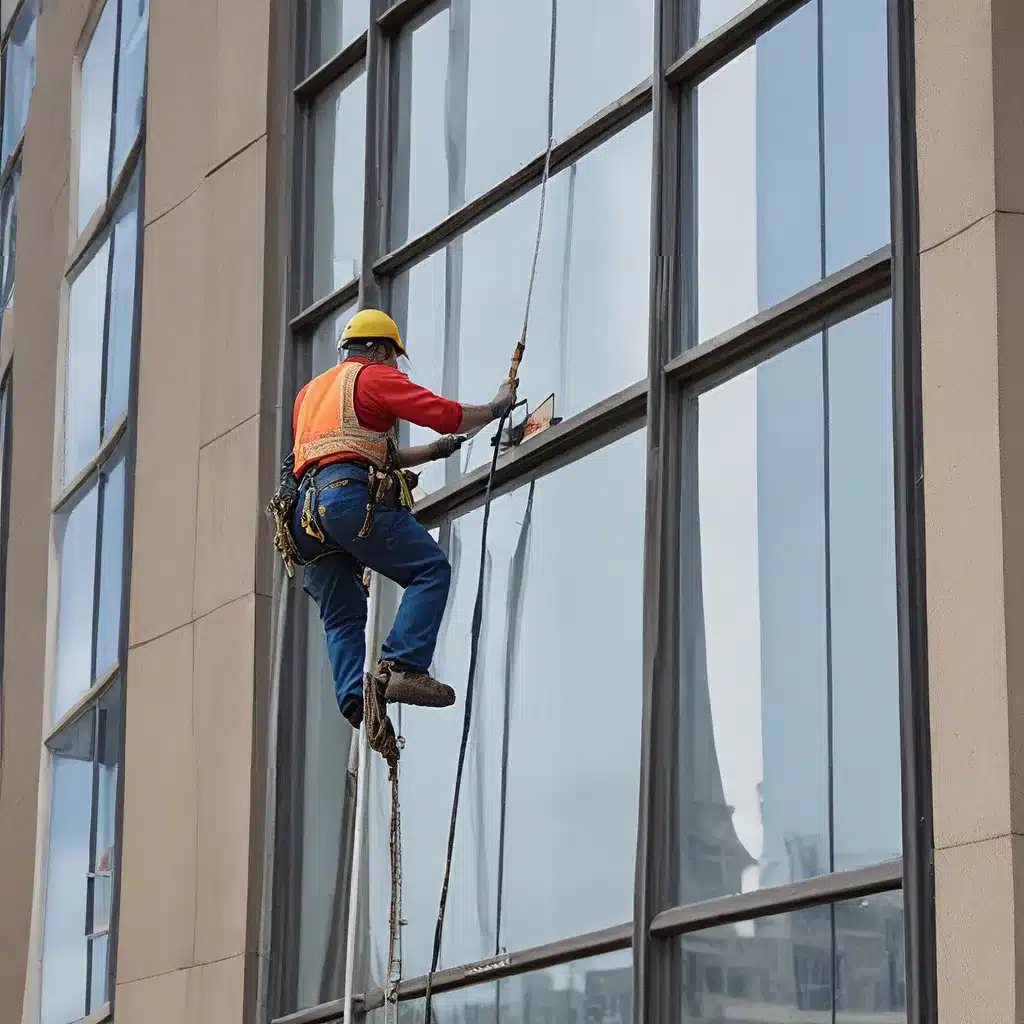
When it comes to high-rise window cleaning, safety should always be the top priority. From navigating strong winds to balancing on narrow platforms at great heights, this specialized task requires meticulous planning, proper precautions, and a steadfast commitment to protecting the well-being of window cleaners.
Understanding the Risks and Regulations
Working at heights poses inherent risks, and high-rise window cleaning is no exception. Federal and state safety laws are in place to regulate this industry and ensure the safety of workers, pedestrians, and the general public. Adhering to these guidelines is not just a requirement, but a fundamental responsibility.
Key safety regulations for high-rise window cleaning include:
- Mandatory use of personal protective equipment (PPE), such as harnesses, hard hats, and safety glasses
- Proper training and certification for all window cleaning personnel
- Regular inspections of safety equipment and window cleaning apparatus
- Implementing effective safety protocols and emergency procedures
By understanding and strictly adhering to these regulations, window cleaning professionals can mitigate the risks associated with their work and create a secure environment for all involved.
Comprehensive Safety Planning
Before commencing any high-rise window cleaning project, a thorough risk assessment must be conducted. This process identifies potential hazards, such as weather conditions, accessibility challenges, and equipment requirements. Armed with this knowledge, a detailed safety plan can be developed, incorporating emergency procedures, evacuation protocols, and PPE considerations.
Ongoing communication and verification of worker safety are also crucial. Window cleaners must maintain constant vigilance, watching out for one another and immediately addressing any safety concerns that arise.
Investing in Comprehensive Training
Proper training is the foundation of safe high-rise window cleaning. Employees must be equipped with the knowledge and skills to recognize and avoid potential hazards, use safety equipment correctly, and respond effectively in emergency situations.
The training curriculum should cover a wide range of topics, including:
- Equipment maintenance and usage: Ensuring proper handling and operation of harnesses, ropes, and other specialized gear
- Safety protocols and emergency procedures: Enhancing the ability to respond quickly and appropriately to unexpected events
- First aid and emergency response: Equipping workers with the knowledge to provide immediate assistance if needed
By investing in comprehensive training, employers can minimize the risks associated with high-rise window cleaning and foster a culture of safety among their workforce.
Prioritizing Personal Protective Equipment (PPE)
The use of proper PPE is non-negotiable in high-rise window cleaning. Sturdy helmets, gloves, and goggles protect workers from falling debris and harmful chemicals, while safety harnesses are essential for preventing falls and securing workers to the building.
Employers have a legal and ethical responsibility to provide appropriate PPE and ensure that their employees are trained in its proper use. Neglecting this duty not only jeopardizes the safety of workers but also exposes the business to significant liability.
Securing Tools and Materials
Unsecured objects, no matter how small, can pose a serious threat to workers and pedestrians below. Proper tool and material securement is crucial to maintaining a safe work environment. Techniques such as using lanyards, tie-down straps, and tool bags with built-in anchor points can effectively prevent items from falling.
Regular pre-work inspections and worker training on tool and material safety are also essential to ensuring that all potential hazards are identified and mitigated before the cleaning process begins.
Maintaining Equipment Integrity
High-rise window cleaning equipment, from ropes and harnesses to pulleys and lifts, must undergo regular maintenance checks to ensure functionality and safety. Worn or damaged components can lead to equipment failure, putting workers at risk of injury or even death.
By implementing a robust maintenance program, employers can extend the lifespan of their equipment, reduce the risk of malfunctions, and provide their workers with the confidence that they are using reliable and well-maintained gear.
Preparing for the Unexpected
Even the most meticulously planned high-rise window cleaning projects can be disrupted by unforeseen circumstances. Having a comprehensive backup plan in place is essential to mitigating the impact of emergencies or other unforeseen events.
This plan should consider potential risks, such as adverse weather conditions, equipment failures, or worker injuries, and outline clear communication channels and contingency strategies to ensure a swift and effective response. By anticipating the unexpected, employers can safeguard their workers, protect their business, and maintain the trust of their clients.
Conclusion
High-rise window cleaning is a specialized and inherently risky task, but with the right safety practices in place, it can be executed effectively and securely. Prioritizing worker safety, investing in comprehensive training, and maintaining a steadfast commitment to equipment integrity and contingency planning are all crucial elements in ensuring a successful and accident-free window cleaning project.
By partnering with a reputable and safety-focused window cleaning service, such as Kingston Window Cleaners, businesses and homeowners in Kingston, Ontario, can rest assured that their window cleaning needs will be met with the utmost care and attention to safety. With a team of highly trained professionals and a robust safety framework, Kingston Window Cleaners is committed to delivering exceptional results while prioritizing the well-being of their workforce and the community they serve.

